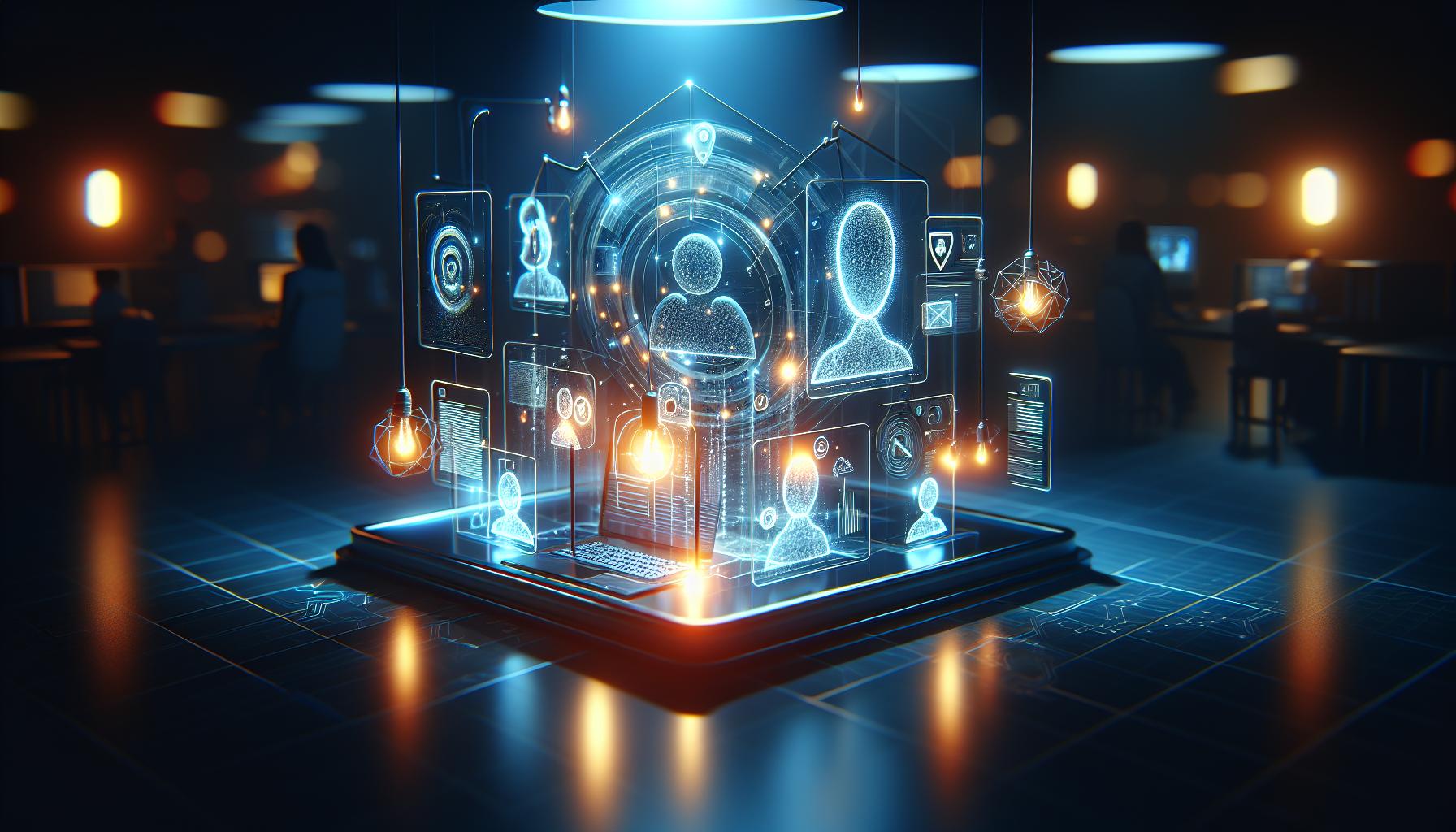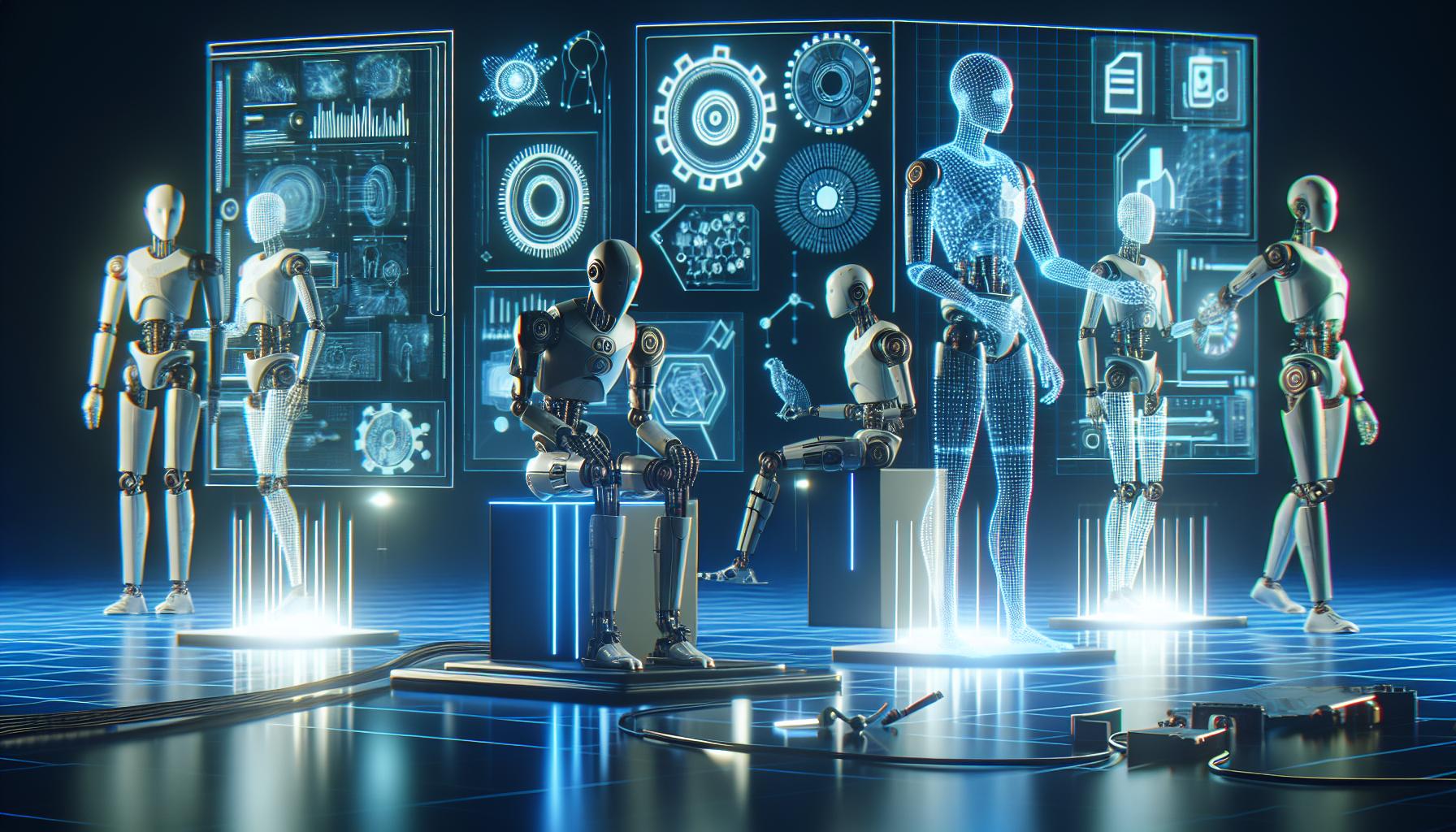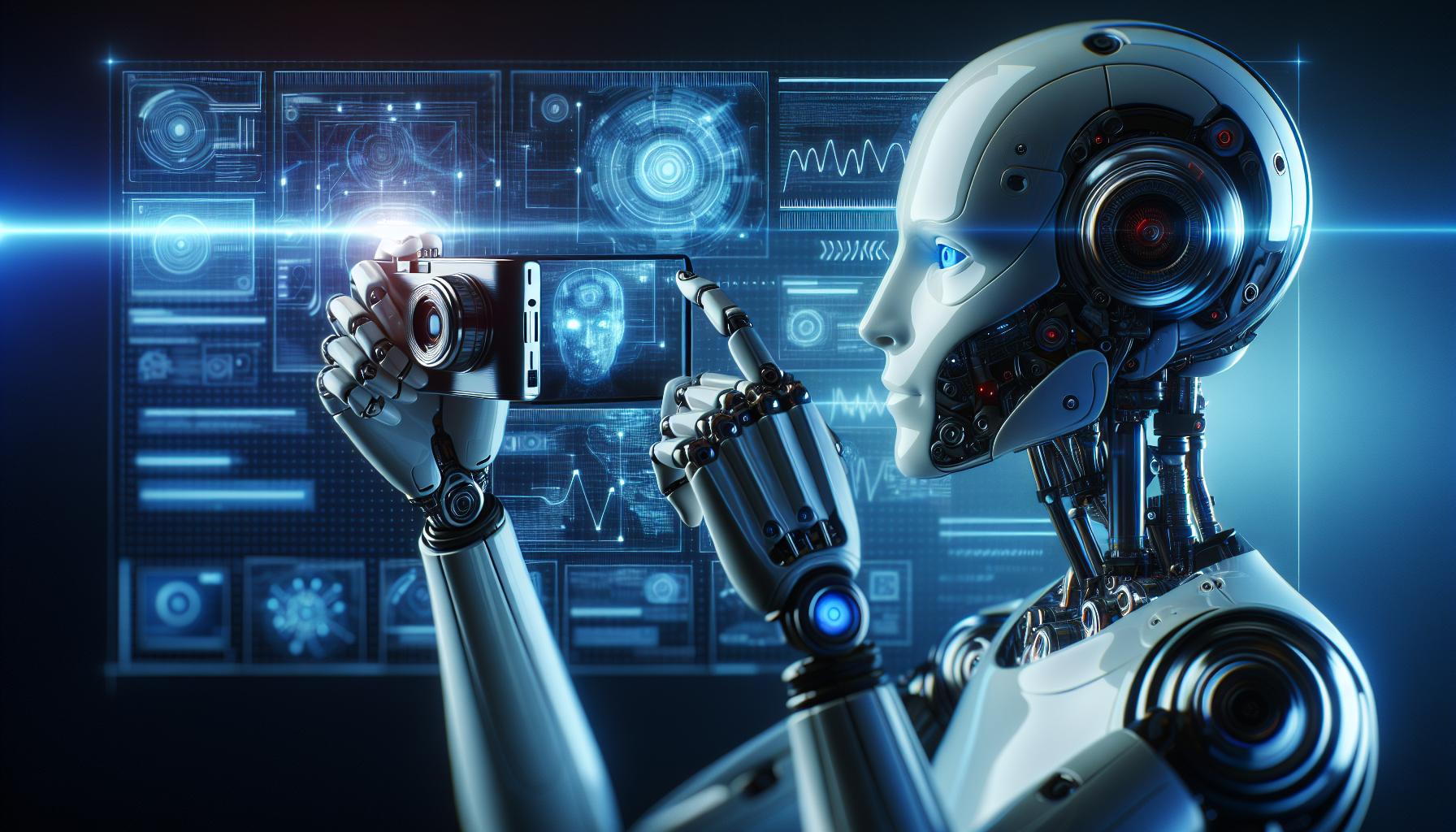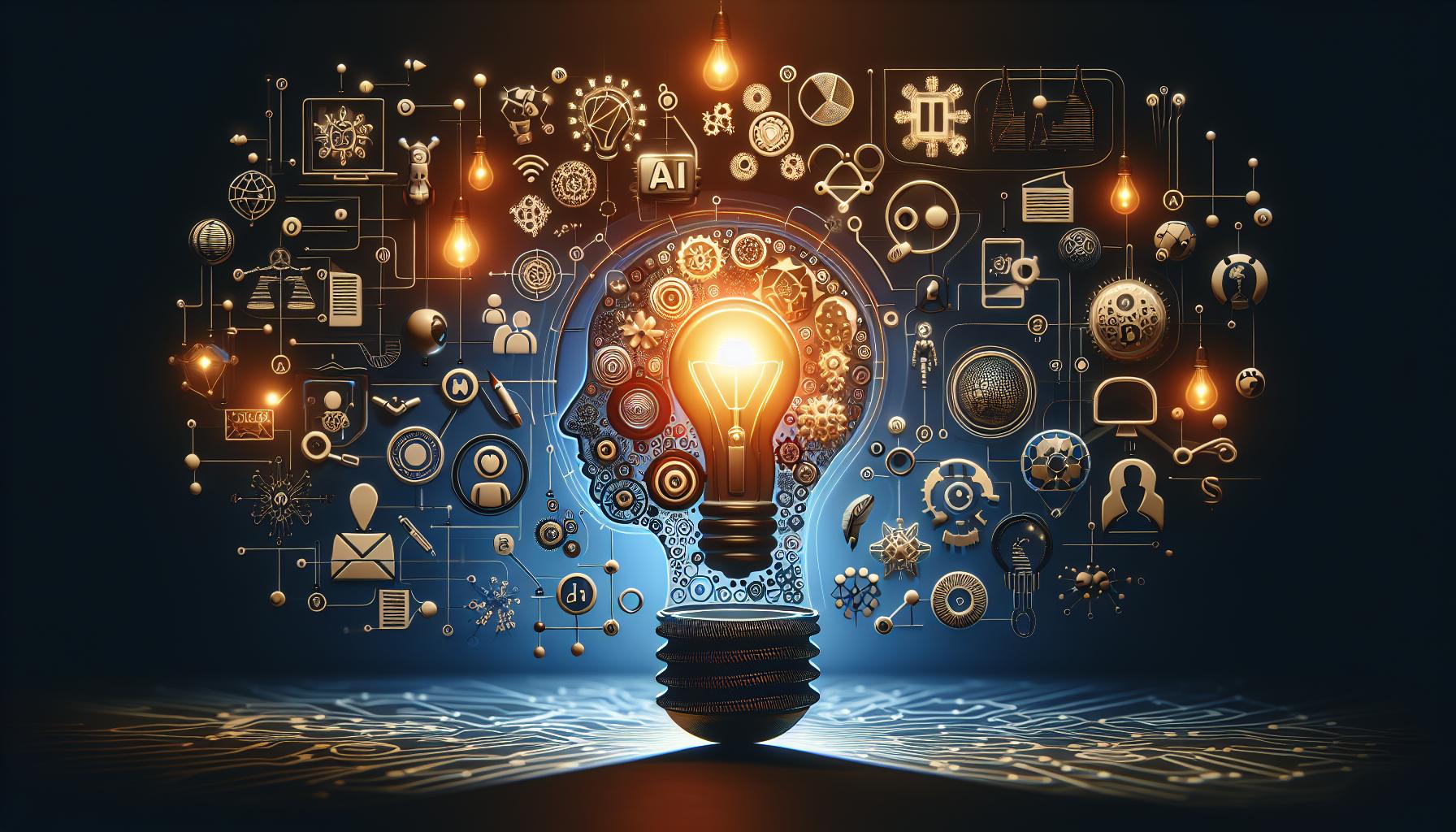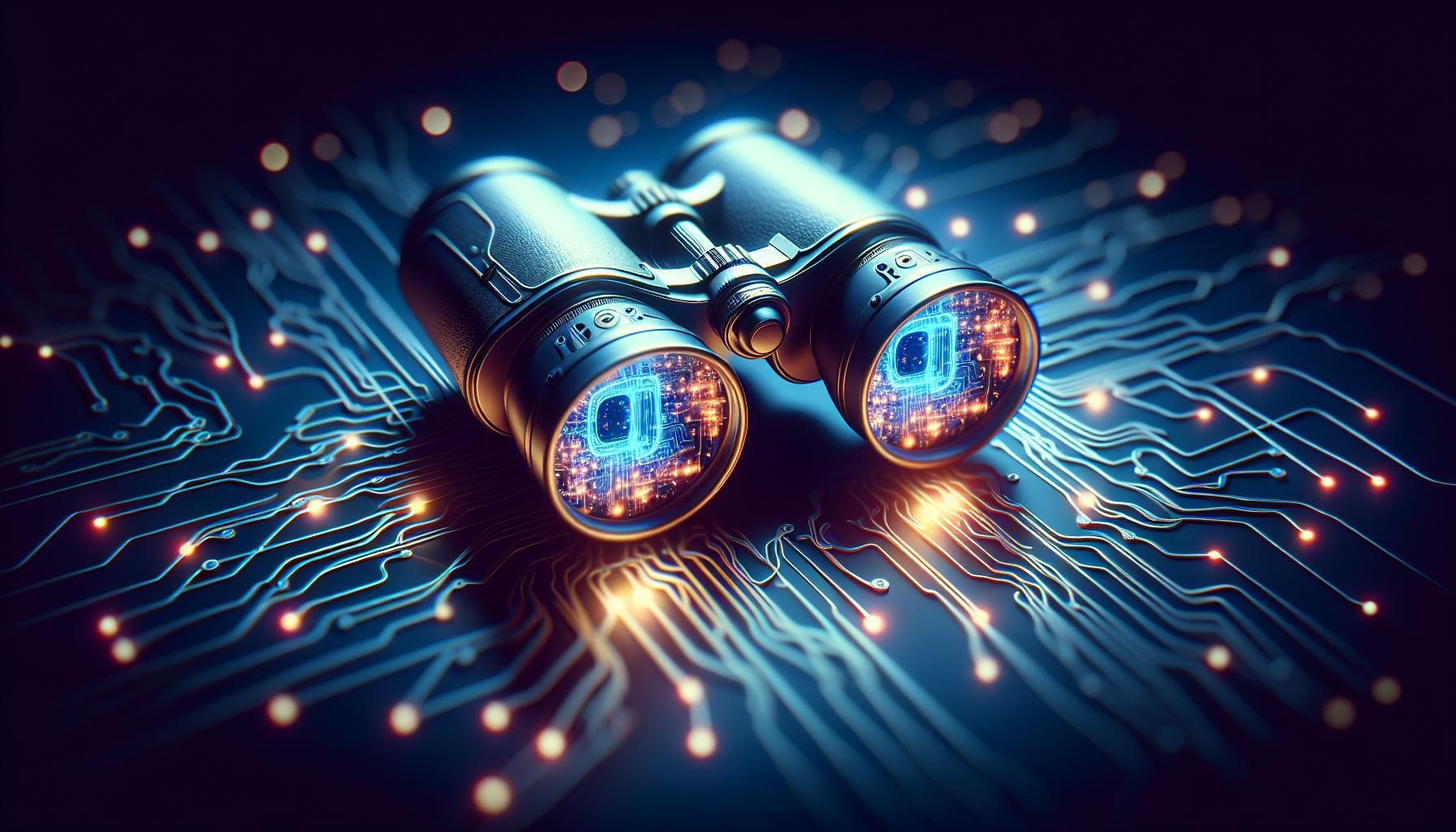Struggling to ignite your creativity when designing unique characters? Discovering fresh styles for AI-generated character concept art can transform your creative process. This guide explores diverse prompt styles to inspire stunning visualizations, ensuring you harness the full potential of AI in your artistic journey. Unleash your creativity today!
understanding the Basics of AI in Character Design: A Beginner’s Guide
Did you know that AI is revolutionizing the way we approach character design? With the advancements in artificial intelligence, creators now have powerful tools at their fingertips to generate imaginative and diverse character concepts at an incredible speed. This beginner’s guide will walk you through the fundamental aspects of integrating AI into your character design process, empowering you to harness these innovative techniques effectively.
What is AI in Character Design?
AI in character design refers to the use of machine learning algorithms and generative models to create visual art,specifically character concepts. by training on vast datasets of existing art,these AI models can produce unique designs based on prompts given by users. This not only enhances creativity but also streamlines the design process, allowing artists to explore a multitude of styles and concepts with ease.
Key Elements of AI character Concept Art Prompt Styles
When utilizing AI for character design, it’s essential to understand various prompt styles that can guide the AI in producing relevant outputs:
- Descriptive Prompts: Provide specific characteristics or roles for characters, such as “a fierce warrior with dragon-like features.”
- Emotional Themes: Incorporate emotions that should be reflected in the character, like “a sorrowful mage contemplating her past.”
- Artistic Styles: Mention a particular art style to influence the output, for instance, “inspired by anime aesthetics” or “in the style of Art Nouveau.”
- Setting Context: Establish the environment or background the character belongs to, for example, “a futuristic city” or “ancient mythology.”
By playing with these styles, you can refine your prompts to generate more tailored and inspiring results.
Practical Steps to Implement AI in Your Character Design Process
- Select the Right AI Tool: Choose an AI platform or software that aligns with your design needs. some popular options include DALL-E, Midjourney, and Artbreeder.
- Craft Your Prompts: Start with simple descriptors, then layer in complexity using the key elements mentioned above. Experiment with different combinations to see what resonates best.
- Evaluate and Iterate: Once the AI generates character concepts, assess the results. Don’t hesitate to tweak your prompts and regenerate designs until you achieve a satisfying outcome.
- Incorporate Feedback: Share generated designs with peers for constructive feedback. This helps refine your vision and enhances the overall quality of the artwork.
- Practice and Explore: The more you experiment with various AI character concept art prompt styles, the better you will understand what works for your creative process.
Employing AI may initially feel daunting, but with practice and exploration, it can become a valuable ally in your artistic journey. Engaging with these technologies can unlock new levels of creativity, enabling you to develop distinctive characters that captivate your audience.
Exploring Different Styles: traditional vs. Digital AI Art Prompts
Did you know that the distinction between traditional and digital art can effectively shape the creative process, especially in the realm of AI character concept art? Both styles offer unique prompts and challenges that can inspire artists to explore new dimensions in creativity. By understanding the nuances of each approach, creators can harness the power of both mediums to enrich their artistic practice.
Traditional Art Prompts
Traditional art often emphasizes techniques like sketching, painting, and sculpting. These methods rely on tactile materials, allowing for a visceral connection between the artist and their canvas. When it comes to AI character concept art prompts,traditional forms may encourage artists to focus on:
- Material Exploration: Experimenting with charcoal,pastels,or acrylics can led to unexpected textures and depth.
- physical Studies: Creating life drawings or three-dimensional models enhances understanding of form and anatomy, which can translate effectively into digital concepts.
- Color Theory: using traditional palettes helps artists develop a nuanced understanding of color interactions.
As an example, an artist might start with a traditional watercolor painting of a fantasy creature before translating that into a digital format, allowing the vibrant hues and textures to inform their digital illustrations.
Digital Art Prompts
On the other hand, digital art offers a range of technologies that can substantially elevate the creative process. AI character concept art prompts in digital formats frequently enough highlight the following:
- Software tools: Utilizing programs like Adobe Photoshop or Procreate provides access to advanced features such as layers, brushes, and effects that can streamline the design process.
- Instant Iteration: The ability to quickly modify and iterate on designs allows artists to experiment and refine ideas more fluidly.
- Integration of AI: AI tools can generate suggestions based on prompts, creating new possibilities for character designs and environments.
For example, a designer may input a basic character trait into an AI art generator, receiving several variations to choose from. This approach can inspire fresh ideas that the artist might not have initially considered, bridging the gap between imagination and technological capability.
Combining both Styles
The interplay between traditional and digital art forms can lead to a richer artistic experience. Artists can integrate these styles by first sketching characters on paper before scanning and enhancing them digitally. this hybrid technique not only retains the emotional depth of hand-drawn elements but also takes advantage of digital tools for refinement and finalization.
| Aspect | Traditional Art | Digital Art |
|---|---|---|
| Material | Physical media (paints, pencils) | Software and hardware tools |
| Process | Linear and slower | Fast and iterative |
| Adaptability | Less flexibility post-creation | High flexibility with edits |
| Learning Curve | Skill-based techniques | Software proficiency needed |
By exploring these different approaches to character concept art, artists can expand their creative horizons and produce work that is both visually stunning and deeply imaginative. Embracing the strengths of each style can result in a unique portfolio that showcases versatility, appealing to a wider audience in the art community.
Leveraging AI Tools: Enhancing Creativity in Character Concept Art
Unleashing the Power of AI in character Design
AI tools have revolutionized the landscape of character design, providing artists with innovative ways to expand their creativity. By blending human intuition with machine learning capabilities, creators can explore an endless array of possibilities for character concept art. For example, utilizing AI-driven prompts allows artists to bypass creative blocks and unearth unique styles or themes that they may not have considered otherwise. This synergy between technology and artistry can lead to the creation of distinctive characters that resonate emotionally with audiences and offer fresh perspectives in storytelling.
Effective Use of AI Character Concept Art Prompts
Engaging with AI character concept art prompt styles can enrich the artistic process significantly. Here are a few actionable ways to harness this potential:
- Experiment with diverse Styles: Use AI to generate prompts that incorporate different artistic styles, from traditional to contemporary. This can help you identify a style that best fits your narrative.
- Iterative Prototyping: Take advantage of AI’s ability to quickly create variations of a character based on a single concept. This allows for rapid iteration, helping you refine the design efficiently.
- Thematic Exploration: Input themes and narratives into AI tools to discover characters that are visually and contextually aligned with your story arc. This can foster deep connections between the character and the plot.
By actively utilizing these strategies, artists can cultivate a more dynamic workflow, elevating their creative output and enhancing the overall quality of their character concepts.
Real-World Applications and Examples
Many artists and studios are already leveraging AI-powered tools for character design. As a notable example, several game advancement teams integrate AI-generated art prompts to help brainstorm characters that fit within their game worlds. These prompts can spark inspiration for various attributes such as clothing,color palettes,and even backstories.
Moreover, collaborations between AI artists and traditional illustrators have emerged, creating a hybrid model that combines the emotional depth of human creativity with the precision and variety offered by AI. By merging both worlds, creators can devise characters that are not only visually compelling but also rich in narrative depth.
| Benefits of AI in Character Design | Description |
|---|---|
| enhanced Creativity | AI prompts can inspire fresh ideas and concepts that push creative boundaries. |
| Time Efficiency | Rapid generation of multiple design options saves time in the development process. |
| diverse Perspectives | AI can introduce trends and styles unfamiliar to the artist, broadening their artistic horizon. |
| Data-Driven Design | AI can analyse past accomplished designs to inform new character development strategies. |
integrating AI character concept art prompt styles into your creative process not only enhances artistry but also prepares designers for the evolving demands of the creative industry. Embrace these tools to redefine what is possible in character design.
The Role of Storytelling in Character design: Inspiring Prompts and Ideas
did you know that the power of storytelling is often the backbone of successful character design? A well-crafted character can captivate audiences far beyond their visual appeal, engaging them through personality, motivation, and history. When designing characters, understanding the story they inhabit can unlock new dimensions, not only enhancing their appearance but also deepening the narrative they represent.
Understanding Your Character’s Narrative
When approaching character design through the lens of storytelling, consider these key elements that can influence your artistic direction:
- Backstory: What experiences have shaped your character? A tragic past might manifest in a more somber color palette or rugged attire.
- Motivation: What drives your character? Characters aiming for justice might wear uniforms or carry symbols that represent their cause.
- Relationships: How do they interact with others? Their attire and design could be influenced by their relationships, echoing the styles or colors of their allies or rivals.
- World Setting: What is the environment your character inhabits? Design choices should reflect the societal norms, technology level, and aesthetics of their world.
For instance, think of iconic characters like Spider-Man. His costume, while striking, connects deeply to his narrative of duality—balancing a normal life with that of a superhero. The colors and logo are not just for visual flair; they represent his identity crisis and struggle against crime, making him relatable and memorable.
Prompts to Spark Your Creativity
When it comes to designing characters, storytelling prompts can serve as rich sources of inspiration. Here are some ideas to get your creative juices flowing:
| Prompt | Description |
|---|---|
| Lost Warrior | Design a character who once belonged to a great army but now roams the wilderness, seeking redemption. |
| Time Traveler | create a character who has mastered time travel and carries artifacts from various eras, affecting their appearance. |
| Mythical Guardian | imagine a creature that protects the forest. What unique features woudl signify its power and purpose? |
| Rebellious Scholar | Design a character caught in a dystopian regime who uses their knowledge to incite change. |
These prompts guide you to think differently about character design, urging you to marry visual elements with deeper storytelling aspects. Each character you create can tell a story, making them more engaging and memorable—qualities that resonate well in both personal projects and professional endeavors.
By harnessing the power of storytelling when designing characters, you not only enhance their aesthetic appeal but also their emotional impact. Dive deep into the narrative potentials of your characters, and let that drive your creative process in ways you never imagined.
Embracing Diversity: Creating Unique Characters with AI Assistance
did you know that diverse characters not only enrich storytelling, but they also resonate more deeply with audiences worldwide? In a time when portrayal matters, utilizing AI tools to create unique character concepts is an exciting frontier. AI character concept art prompt styles can enhance creativity by offering endless possibilities for character formation, pushing the boundaries of imagination while emphasizing the importance of diversity.
Exploring Unique Character Traits
One of the most powerful features of AI-assisted character creation is its ability to craft distinctive traits that reflect a myriad of backgrounds and experiences.Here are some key aspects to consider when developing a wide range of characters:
- Cultural Background: Use AI to generate prompts that draw inspiration from various cultures. This can include traditional clothing, hairstyles, and symbols that accurately represent different ethnicities.
- personality Dimensions: Implement AI tools to mix and match personality traits, resulting in multifaceted characters that defy stereotypes. As a notable example, a warrior might potentially be both fierce and nurturing, creating a more relatable figure.
- Physical Characteristics: Explore AI options that provide a variety of features—skin tones, body types, and even age—to develop an inclusive cast that speaks to diverse audiences.
Utilizing AI Prompts to Broaden Choices
The flexibility of AI character prompts can inspire creators to think outside the box and delve into traits that may not have been considered. By inputting specific keywords or themes related to diversity,one can unlock captivating character possibilities. For instance, a prompt like “futuristic healer from a matriarchal society” can lead to the birth of an entirely new character archetype.
To help streamline this process, a table of various AI prompt styles is provided below, highlighting diverse character frameworks that can be incorporated into storytelling:
| Prompt Style | Description | Example Usage |
|---|---|---|
| Historical Fusion | Combining elements from different historical eras or cultures. | A samurai warrior with cyberpunk technology. |
| Fantasy Archetypes | Creating characters with magical or mythical backgrounds. | A dragon shaman from a diverse magical realm. |
| Modern Realism | Grounding characters in real-world issues and lifestyles. | A single parent navigating urban life while pursuing a creative career. |
Incorporating AI character concept art prompt styles not only offers a varied palette for creators but also elevates the richness of narratives. By embracing diversity in character design, storytellers can cultivate deeper connections with their audiences, ensuring that everyone sees a reflection of themselves in the stories being told.
Balancing Automation and Artistic integrity: ethical Considerations in AI Art
Understanding the Intersection of Automation and Artistry
In the burgeoning realm of AI-assisted creativity, striking the right balance between automation and artistic integrity becomes crucial. as artists utilize AI character concept art prompt styles to inspire their creativity, questions arise about originality, authorship, and the ethical implications of relying on technology. Artists are increasingly finding themselves at a crossroads: should they embrace AI as a tool for enhancing creativity, or does it risk diluting their personal artistry? This dilemma calls for a nuanced exploration of ethical considerations surrounding the use of artificial intelligence in art.
Ethical Dimensions of AI in Artistic Practice
The rise of AI in art generation has sparked a dialog about the moral responsibilities of creators who incorporate these technologies. Some key ethical considerations include:
- Attribution and Copyright: When AI generates art based on existing styles or concepts, the lines around copyright and ownership blur. Artists must contemplate how to credit the technologies and processes that inform their work.
- Originality and Authenticity: If an artist leans heavily on AI-generated prompts for inspiration, does this compromise the authenticity of their voice? This question holds important weight in the artistic community.
- Access and Inclusivity: While AI can democratize access to tools for creativity, it also poses a risk of prioritizing those with advanced tech skills over traditional artists, raising issues of equity in the creative sector.
Striving for a Harmonious Relationship Between AI and Art
to navigate these ethical waters, artists can take positive steps toward ensuring their use of AI enriches rather then diminishes their creative output. Here are some strategies:
- Integrative Approach: Use AI character concept art prompt styles as a springboard for your unique ideas. Consider AI-generated prompts as frameworks that you can modify and enrich with your personal style.
- Collaborative Projects: Engage in collaborations where both human creativity and AI capabilities complement each other. This cooperative model helps maintain artistic ownership while effectively leveraging technology.
- Clear Practices: Openly communicate your processes and the role AI plays in your art. Clarity fosters trust and encourages discussions about ethical practices within the community.
Real-world Questions and Considerations
Embracing AI in art involves grappling with real-world implications. Such as,recent discussions have surfaced regarding how AI tools like DALL-E and midjourney might impact job opportunities for traditional artists. The focus now shifts to finding innovative ways to coexist with these technologies. How can emerging artists utilize AI character concept art prompt styles to elevate their practice while maintaining a distinct creative identity? The answers to these questions will significantly shape the future landscape of artistic creation,guiding artists toward a harmonious integration of technology without sacrificing the essence of their artistic integrity.
Customizing AI prompts: Tips for Generating Tailored Character Concepts
Unleashing Creativity through Customization
In the world of character design, standing out is crucial. Customizing AI prompts is an essential step in generating unique and compelling character concepts. By tailoring your prompts to fit specific themes, traits, or narratives, you can significantly enhance the quality of the output. This approach not only helps in creating more engaging characters but also facilitates a deeper connection between the concept and its intended audience.
Key Tips for Tailoring Your Prompts
When formulating prompts for AI character concept art, consider the following tips to unlock creativity:
- Specify Traits: Detail specific characteristics you want the AI to focus on, such as age, gender, occupation, or personality traits. This guidance helps the AI generate more aligned concepts.
- Contextual Background: Provide a brief background or context within which the character exists. Such as, specify whether the character belongs to a futuristic world or a magical realm.
- Visual Style: Indicate the art style you prefer,such as retro,futuristic,or hyper-realistic. This ensures the output aligns with your visual aspirations.
- Emotion and Mood: Define the emotional tone you wish to convey through the character, such as heroic, melancholic, or mischievous, to foster deeper storytelling.
Structuring Effective Prompts
Creating structured prompts can lead to more precise character designs. Here’s an example of how to structure a prompt effectively:
| Component | Example Description |
|---|---|
| Character Type | Warrior Princess |
| Setting | Post-apocalyptic world |
| Key Traits | Brave, strategic, compassionate |
| Visual Style | Dark fantasy with intricate armor designs |
| Mood | Resolute yet hopeful |
Using this structured approach, you can create prompts that lead to the generation of distinctive and well-rounded character concepts. Each element in your prompt acts as a guiding beacon for the AI,paving the way to unlock a plethora of inspiring character designs. Engaging with AI character concept art prompt styles allows creators to explore the boundaries of their imagination, revealing the diverse potential within their ideas.
Future Trends in AI Character Design: What to Expect and How to Adapt
Embracing Change in AI Character Design
As technology continues to evolve at an unprecedented pace, the world of AI character design is set to undergo transformative shifts. The emergence of advanced AI tools is not just changing how characters are created; it’s expanding the horizons of what these characters can embody.With AI character concept art prompt styles serving as a wellspring of inspiration, it’s essential for creatives to stay ahead of these trends to harness their potential effectively.
Key trends to Watch
- Personalization through AI: Expect a move towards hyper-personalized characters that reflect individual user preferences. AI tools will soon enable designers to create characters that adapt to user interactions, ensuring deeper engagement.
- Collaborative AI Models: Artists will increasingly work alongside AI systems that learn their styles and enhance their creativity. this hybrid approach can lead to novel designs that blend human intuition with AI-generated innovation.
- Real-time Feedback and adaptation: Future AI systems will provide immediate feedback during the character design process. This capability allows designers to refine their concepts on the fly, significantly speeding up production timelines.
- Sustainability and Ethical Considerations: As the focus on sustainability grows, AI tools will also evolve to help designers create characters that embody eco-amiable concepts. The integration of ethical considerations in narratives can resonate more with socially conscious audiences.
Adapting to These Trends
to thrive amid these advancing trends, designers should consider the following actionable steps:
- Invest in Learning AI Tools: Familiarize yourself with the latest AI character design software. Online courses and tutorials can provide valuable insights into how to leverage AI effectively.
- Collaborate with AI: Experiment with collaborative projects where AI assists you in character creation. Use prompts related to your style but let AI introduce unpredictable elements that spark new ideas.
- Focus on User Engagement: Conduct user research to understand what audiences are looking for. Use findings to guide how you integrate personal touches into your character designs.
- Stay Informed: Regularly follow industry journals and forums to keep abreast of the latest developments in AI and design methodologies.
Case Studies from the Field
the gaming industry, as an example, has already started to embrace AI character generation. Some studios are utilizing AI-driven character concept art prompt styles to better engage players, allowing them to see their choices reflected in the characters they interact with. Similarly, animated series are exploring AI integration for creating dynamic characters that evolve with the narrative arcs and viewer reaction.
By understanding and adapting to these emerging trends in AI character design, creatives can not only remain relevant but also redefine the landscape of character conceptualization. Embracing change and fostering collaboration with AI will certainly inspire a new wave of creativity and innovation in character design.
Case Studies: Successful Character Designs born from AI Creativity
- AI-generated character designs are not just a trend; they are revolutionizing the fields of gaming, animation, and comics.
- Several successful projects have integrated AI character concept art prompt styles, showcasing the unique potential of AI creativity.
The Rise of AI in Character Design
as the boundaries of creativity continue to blur, numerous creators are turning to artificial intelligence to generate visually stunning characters that captivate audiences. One notable example is the beloved indie game “Spiritfarer,” where the character Charon, originally conceived using AI art prompts, has become iconic for its emotional depth and visual appeal. Developers utilized AI technology to explore numerous artistic styles, allowing them to merge influences from various cultures and art movements. The outcome was a character that resonates deeply with players, giving life to the game’s themes of companionship and farewell.
Transforming Concepts into Reality
Another striking instance is found in the animated series “Bless the Harts.” The creator used AI-driven character concept art prompt styles to experiment with a diverse range of expressions and characteristics for primary and secondary characters. By inputting descriptions and letting the AI propose visual styles, the design team could rapidly generate iterations that incorporated humor and relatability, ultimately leading to a richer story and varied character dynamics. This approach not only accelerated the design process but also led to unpredictable design outcomes, fostering innovation in character representation.
Table: Key Features of Successful AI-Generated Characters
| Feature | Description | Example |
|---|---|---|
| Unique Personalities | AI helps develop distinct traits and backstories. | Alice from “Spiritfarer” |
| Visual Diversity | AI prompts generate a variety of artistic styles. | Characters in “Bless the Harts” |
| Story Integration | Designs reflect key narrative themes. | the duality of light and dark in “Spiritfarer” |
| Speed and Efficiency | Rapid prototyping of concepts reduces timelines. | Various background characters in animated series |
By leveraging AI character concept art prompt styles, designers not only enhance creativity but also streamline the design processes, leading to memorable characters that stick with audiences. These case studies illustrate the potential of AI to push the boundaries of traditional artistry, encouraging artists and developers alike to embrace this technology and integrate it into their creative journey.
collaborating with AI: Finding Synergy Between Human Designers and Technology
Embracing the Creative Partnership
In today’s rapidly evolving digital landscape, the integration of artificial intelligence in the creative process is not just innovative—it’s transformative. AI offers a wealth of opportunities for human designers, enabling them to extend their creative capabilities and streamline workflows. By collaborating with AI, designers can explore a myriad of AI character concept art prompt styles that inspire creativity and push artistic boundaries like never before.
One of the most compelling benefits of leveraging AI in design is its ability to generate a myriad of ideas in a fraction of the time it would take a human alone. For instance, through sophisticated algorithms, AI can analyze existing artwork and offer unique character concepts based on varying themes or styles. Designers can utilize these AI-generated prompts to fuel their imagination, creating a dynamic interplay where technology enhances artistic expression. Additionally, AI tools can assist in iterating designs quickly, allowing artists to refine their ideas based on feedback and data trends, ensuring that the creative process remains agile and impactful.
Practical Steps to Enhance Collaboration
To effectively harness the synergy between human designers and AI, consider implementing the following strategies:
- Use AI-Driven Design Tools: Platforms like Midjourney and Artbreeder can provide diverse character prompts that act as springboards for creativity.
- Iterate with AI Feedback: Utilize AI’s analytical capabilities to assess your designs’ appeal, ensuring they resonate with target audiences.
- Collaborate in Real-Time: Employ AI collaboration tools to foster a dynamic environment where ideas can be generated,shared,and refined instantaneously.
Integrating AI into the design process is akin to having a creative partner that augments rather than replaces the human touch. As designers navigate the uncharted waters of AI character concept art, their role evolves into that of a curator—selecting, refining, and ultimately giving form to the ideas generated through this powerful collaboration. By embracing these AI character concept art prompt styles, designers can unlock a new realm of possibilities, enriching their creative toolkit while nurturing their unique artistic voice.
| AI Tool | Key Feature | Best For |
|---|---|---|
| Midjourney | Creative prompt generation | character design brainstorming |
| Artbreeder | Image blending & modification | Visual iteration and refinement |
| Canva AI | Template and layout suggestions | Swift content creation |
With these tools and strategies at their disposal, designers can cultivate a collaborative atmosphere, where both human intuition and AI’s computational strength coexist harmoniously, driving forward the future of AI character concept art prompt styles. This partnership fosters a rich environment for innovation, allowing creativity to flourish in exciting new ways.
In Conclusion
exploring AI character concept art prompt styles reveals a myriad of avenues for creative expression and innovation. By leveraging generative algorithms, artists can harness diverse styles—from whimsical fantasy to hyper-realistic renditions—enhancing their ability to visualize and iterate on concepts swiftly. Furthermore, understanding prompts and their parameters can enable both seasoned professionals and newcomers to refine their artistic processes, improving efficiency while expanding imaginative possibilities.
As you embark on your journey of artistic exploration, consider the ethical implications of AI in creativity. Balancing inspiration and originality is crucial as we integrate these technologies into our workflows. Embrace the potential for collaboration between human creativity and AI’s capabilities,acknowledging its limitations while pushing the boundaries of what’s possible.
We encourage you to delve deeper into this exciting intersection of art and technology. Experiment with different prompts, share your creations, and engage with the community around you. The future of character design is innovative and collaborative—start your exploration today!




